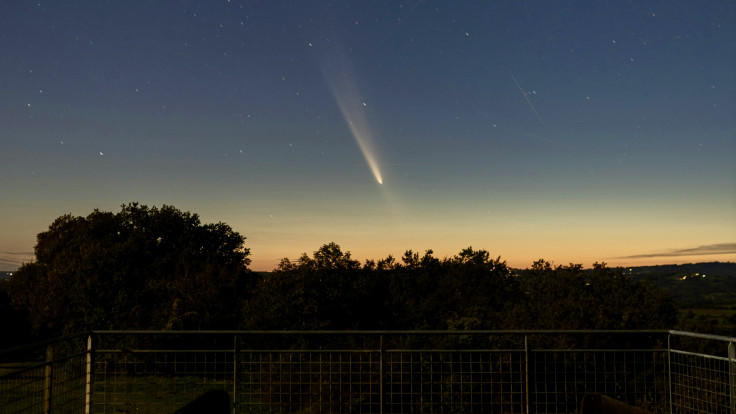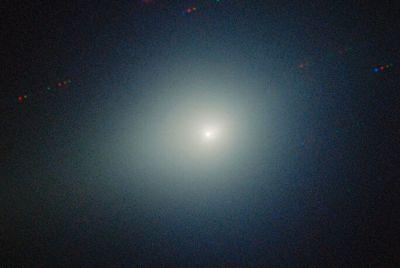3I/ATLAS Nears the Sun: Why NASA Spacecraft Will See What Earth Cannot
Interstellar comet 3I/ATLAS is hidden from Earth as it nears the Sun. See how NASA is watching.

A rare visitor from interstellar space, comet 3I/ATLAS, is about to make its closest approach to the Sun. On 30 October, it will reach perihelion, the point in its journey where it is nearest our star and expected to be at its most active.
But while this cosmic traveller heats up, sky-watchers on Earth will miss the show entirely. The comet is currently hidden behind the Sun, lost in its blinding glare.
Fortunately, Earth's perspective is not the only one. A fleet of robotic explorers across the solar system, including missions at Mars and beyond, has a front-row seat to the event.
What Makes This Solar 'Fly-By' So Special?
Perihelion for 3I/ATLAS will occur at a distance of 1.35 astronomical units (125 million miles, or 202 million kilometres) from the Sun. One astronomical unit (AU) is the average distance between Earth and the Sun.
While 3I/ATLAS is just passing through and not orbiting our Sun, this close approach has a dramatic effect. The intense solar warmth causes ice on the comet's surface to sublimate, or turn directly into gas.
This outgassing process creates a glowing cloud called a coma around the nucleus and often sprouts two distinct tails: one made of dust and an 'ion tail' of charged particles pushed by the solar wind. This activity, which theoretically peaks at perihelion, makes the comet much brighter.
Why Earth Is Blind (And Mars Is Not)
Earth-based observers are out of luck because 3I/ATLAS moved into solar conjunction in late September. It essentially slipped behind the Sun from our point of view, completely lost in its glare.
It will not reappear in Earth's morning sky until late November or early December. This means telescopes on Earth, and even those in Earth orbit like Hubble or at the L2 Lagrange point like Webb, are missing the comet's most active phase.
However, our robotic explorers are perfectly positioned. The small armada of spacecraft currently orbiting Mars, for instance, can see the hemisphere of the Sun that 3I/ATLAS is rounding. These missions had a ringside seat for the comet's close approach to the Red Planet on 3 October, when it passed just 0.19 AU (17.6 million miles, or 28.4 million km) away.
Which Other Robotic Eyes Are Watching 3I/ATLAS?
Other missions, including NASA's Psyche (en route to its namesake asteroid) and the Lucy mission (heading to Jupiter's Trojan asteroids), will also be able to watch the perihelion.
The European Space Agency's (ESA) Jupiter Icy moons Explorer (JUICE) probe is also heading in the comet's general direction after a recent Venus fly-by.
While JUICE will be closest, it is currently using its primary antenna as a sun-shield to protect its delicate instruments. As a result, any data it collects on the comet will not be transmitted back to Earth until next February.
🚨 Alright, Let’s Talk 3I ATLAS ☄️
— Curiosity (@MAstronomers) October 29, 2025
There’s been a wave of speculation around Comet 3I/ATLAS, and for good reason — it’s not behaving like a normal comet. That’s a fact
With so much noise online, we wanted to go straight to the data and share what’s actually confirmed as of… pic.twitter.com/KrPSAcui6f
What Clues Does This Interstellar Visitor Hold?
Scientists are focused on the comet's chemistry. The gas and dust released during outgassing are a direct sample of its composition, offering clues about the star system where it formed over seven billion years ago.
Astronomers have already made fascinating discoveries. 3I/ATLAS contains more carbon dioxide than comets native to our solar system and has a higher abundance of nickel.
These differences allow for direct comparisons between the chemistry of our solar system and the comet's distant home. The peak activity at perihelion could reveal new molecules; researchers are watching closely to see if iron emissions, so far absent, will finally appear.
When Can We Finally See the Comet?
When 3I/ATLAS re-emerges from the Sun's glare in late November, it may still be quite active. Comets, after all, are notoriously unpredictable.
However, given its vast distance from Earth, it is expected to be faint, with a predicted magnitude of 12. This will likely be too dim for backyard telescopes but should be attainable for astro-imagers and users of smart telescopes.
It will also be an easy target for the powerful optics of the Hubble and James Webb space telescopes.
© Copyright IBTimes 2025. All rights reserved.


















